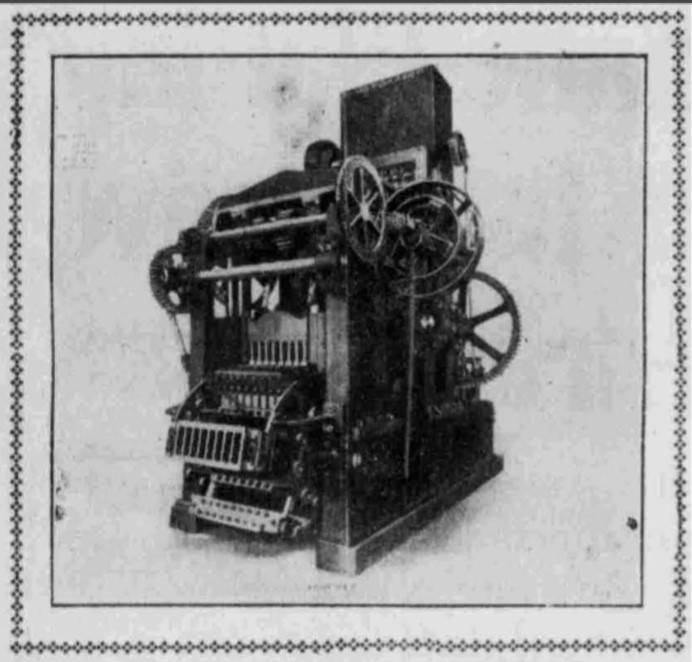Former Brickyards
Introduction
Text-to-speech Audio
Images
Brick making machine to be used by new brick plant opening in Salt Lake County in 1910

1912 newspaper ad for J.F. Jakeman & Co., builder and brick dealer in Cedar City

Backstory and Context
Text-to-speech Audio
It is thought that the first brickmaking in Cedar City took place in 1852 to provide bricks for lining the newly-established blast furnace. Since the Deseret Iron Company's furnace was near 400 North 100 East (site of another historical marker and Clio entry), the bricks were likely made close by. At least two large brick dwellings were standing in Cedar City by early 1860; the two-story homes were said to "add much to the beauty of the city." Bricks made in Cedar City at that time were selling for ten dollars per thousand. The local brickyards moved near this location south of town later. The names historically associated with the brickmaking industry in Cedar City include Bryant, Fretwell, Dutton, Rollo, Jackman (or Jakeman) and Palmer.
Bricks were in demand in the 1890s to support the burgeoning silver mining industry. A new stamping mill, to crush the ore for processing, was being built in Eagle Valley in 1898. Multiple wagon teams left Cedar City on one day carrying 20,000 bricks and 2,000 bushels of lime needed to build the foundation for the Nelson 30-stamp mill. In 1908, students at the state School of Mines conducted tests on bricks submitted by every brick manufacturer in Utah. A sample of ten bricks was chosen at random from the fifty bricks sent by each firm. The university students tested strength of the bricks in their mechanical lab and compared wire-cut with pressed bricks of different colors; wire-cut bricks proved to be stronger than pressed bricks.
A group of investors in Salt Lake City, Utah announced in 1910 that they would begin producing bricks without using kilns. Newly-patented machines would make the bricks from a sand a cement mixture. The bricks would need to dry for 24 hours in a steam room and would then be dirt-proof, waterproof, and fireproof. The group had raised funds of $200,000 to establish the enterprise. One machine could make 40,000 bricks in one day, and a common laborer could operate the machine instead of the skilled labor needed to handle clay-based brickmaking. The plant was to be established on land in Salt Lake County east of Sandy.
A new brick plant began operating in Cedar City in June 1921. J.F. Jakeman & Company, a local contractor, planned to produce brick for the firm's own use in building and to supply others. The company boasted of having access to the finest local sources of raw materials. They were prompted to enter the manufacturing arena by the increasing prices for bricks, which recently went up by fifty cents per thousand bricks. This increase probably was the result of the demand for buildings as Cedar City was being touted as a jumping off spot for the increasing tourist trade, and the rumors of a rail line spur coming to the town. The rumors came true in 1923 when a rail spur was completed to the new depot in downtown Cedar City, which was constructed of brick.
Some of the brick within the monument holding this historical marker was manufactured in the local brickyards; those bricks are on the front of the monument, below the marker.
Sources
Anonymous. "Silver in Sandstone: Renewal of the Old Activity in Silver Reef." Salt Lake Herald (Salt Lake City, UT) June 1st 1898.
Anonymous. "Tests of Brick." Deseret Evening News (Salt Lake City, UT) October 9th 1908.
Anonymous. "Local Capital in New Industry." Deseret Evening News (Salt Lake City, UT) April 9th 1910.
Bowen, Dawn. Old Brickyards, Historical Marker Database. June 16th 2016. Accessed August 27th 2020. https://www.hmdb.org/m.asp?m=1381.
M., J. H.. "Correspondence: News from Iron County, January 4th 1860 letter from Parowan." Deseret News (Cedar City, UT) February 15th 1860.
Deseret Evening News, Cedar City, UT, April 9th 1910
Iron County Record, Cedar City, UT, August 23rd1912
